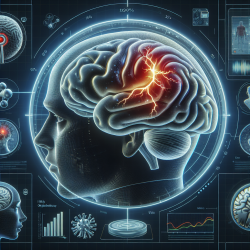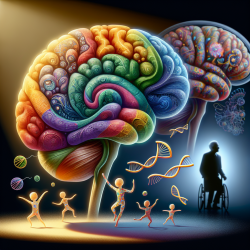Introduction
Chronic pain is a complex condition that affects millions worldwide, often leading to significant physical and psychological distress. Recent research, such as the study titled "How do morphological alterations caused by chronic pain distribute across the brain? A meta-analytic co-alteration study," provides valuable insights into how chronic pain affects brain morphology. This blog aims to help practitioners understand these findings and consider their implications for improving therapeutic outcomes, particularly for children.
Key Findings of the Study
The study utilized a meta-analytic approach to examine brain morphological changes in individuals with chronic pain. The researchers found that gray matter (GM) alterations do not occur randomly across the brain. Instead, they form patterns that resemble brain connectivity networks. The study identified several key findings:
- Gray matter alterations are not randomly distributed; they follow specific patterns linked to brain connectivity.
- The co-alteration pattern of GM changes resembles the pattern of brain functional connectivity.
- Highly connected nodes within the brain's network play a significant role in the distribution of these alterations.
Implications for Practitioners
For practitioners, these findings underscore the importance of understanding the brain's connectivity when addressing chronic pain. Here are some practical implications:
- Targeted Interventions: By identifying key nodes within the brain's network that are affected by chronic pain, practitioners can develop targeted interventions that focus on these areas, potentially improving therapeutic outcomes.
- Early Intervention: The study suggests that early intervention may prevent the spread of GM alterations. Practitioners should consider early diagnosis and treatment strategies to mitigate long-term brain changes.
- Holistic Approach: Understanding the interconnected nature of brain networks highlights the need for a holistic approach to treatment, considering both physical and psychological aspects of chronic pain.
Encouraging Further Research
The study opens several avenues for further research. Practitioners are encouraged to explore the following areas:
- Longitudinal Studies: Investigate how GM alterations evolve over time with different treatment modalities.
- Child-Specific Research: Focus on how chronic pain affects brain development in children and how early interventions can be tailored to their unique needs.
- Multimodal Approaches: Combine neuroimaging with behavioral assessments to gain a comprehensive understanding of chronic pain's impact on the brain.
Conclusion
Understanding the distribution of morphological alterations in the brain due to chronic pain provides valuable insights for practitioners. By leveraging these findings, practitioners can enhance their therapeutic approaches, ultimately leading to better outcomes for individuals, especially children, suffering from chronic pain.
To read the original research paper, please follow this link: How do morphological alterations caused by chronic pain distribute across the brain? A meta-analytic co-alteration study.










